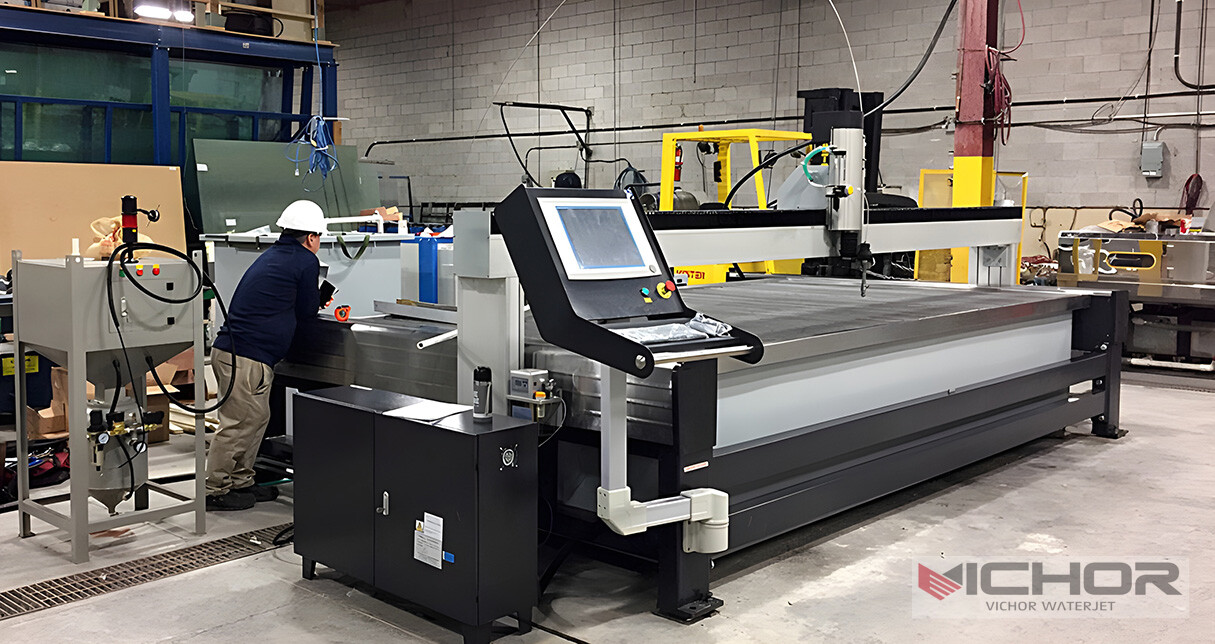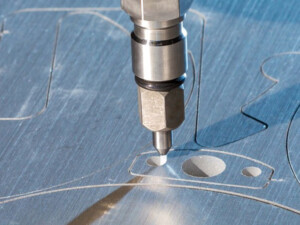
How an Abrasive Water Jet Nozzle Works and Solutions to Common Problems
In the world of precision cutting, from intricate marble mosaics to robust titanium aerospace components, one technology stands out for its versatility and power: the abrasive water jet. At the very heart of this powerful system lies a critical component that often goes unnoticed but is absolutely essential to its operation—the abrasive water jet nozzle. This sophisticated piece of engineering is where the magic happens, transforming a stream of high-pressure water into a cutting tool capable of slicing through almost any material. Understanding its function, components, and maintenance is key to unlocking the full potential of water jet technology. This article delves deep into the inner workings of the abrasive water jet nozzle, exploring its design, the science behind it, and how to troubleshoot the common issues that can affect its performance.
The Core Function: How an Abrasive Water Jet Nozzle Transforms Water into a Cutting Tool
An abrasive water jet nozzle is not a single part but rather an assembly, often referred to as the cutting head or mixing tube assembly. Its primary function is to create a coherent, high-velocity stream of abrasive particles suspended in water that can erode through materials. The process begins with a jet of ultra-high-pressure water (often exceeding 60,000 psi) exiting a small diamond or sapphire orifice, known as the water jet nozzle. This creates a pure water jet moving at incredible speeds, up to three times the speed of sound.
However, this pure water jet is only effective for cutting soft materials like rubber or foam. To cut metals, stone, glass, or composites, abrasive particles must be introduced. This is where the main abrasive water jet nozzle assembly takes over. The high-speed water jet enters a mixing chamber within the nozzle, creating a vacuum that draws in abrasive garnet (or other materials) from a feed line. The water and abrasive mix in this chamber before being focused and accelerated through a long, narrow tube called the focusing tube or mixing tube. The final result is a concentrated, abrasive-laden stream that performs the cutting.
Deconstructing the Components: Anatomy of an Abrasive Water Jet Nozzle
To fully appreciate its operation, one must understand the key parts that make up a standard abrasive water jet nozzle assembly:
Water Jet Orifice: This is typically a small, precision-made gemstone, either synthetic diamond or sapphire. It is responsible for creating the initial high-speed water jet. Its tiny diameter (typically between 0.004″ and 0.016″) is crucial for generating the required velocity and pressure.
Mixing Chamber: Located directly below the water jet orifice, this is where the vacuum effect (Venturi effect) pulls abrasive into the water stream. The geometry of this chamber is vital for ensuring efficient mixing and consistent abrasive feed.
Abrasive Feed Port: This is the inlet through which abrasive is delivered into the mixing chamber from the abrasive delivery system.
Focusing Tube (Mixing Tube): This is a long, cylindrical tube, usually made of ultra-hard carbide (e.g., tungsten carbide) or ceramic. It is arguably the most critical wear component in the entire assembly. Its job is to condense and align the mixture of water and abrasive into a coherent, focused stream. The length and inner diameter of the focusing tube significantly influence cut quality and kerf width.
The Critical Role of Materials and Wear
The extreme environment inside an abrasive water jet nozzle demands materials that are incredibly hard and durable. The water jet orifice, subjected to immense pressure and erosion, is almost always made from synthetic diamond or sapphire for its exceptional hardness and wear resistance. The focusing tube, however, faces a different kind of abuse. It is constantly eroded by the high-velocity abrasive slurry passing through it.
Tungsten carbide is the standard material for focusing tubes due to its excellent combination of hardness and toughness. Even so, it wears out over time. The constant abrasion causes the inner diameter of the tube to widen and its entrance to become bell-mouthed. This wear directly degrades cutting performance, leading to a wider kerf (cut width), tapered edges, and slower cutting speeds. Therefore, the focusing tube is a consumable part that requires regular monitoring and replacement.
Maximizing Performance and Ensuring Longevity
Proper maintenance and operation are paramount to getting the most out of your abrasive water jet nozzle. Key best practices include:
Using High-Quality Abrasive: The purity, size, and hardness of the abrasive garnet directly impact nozzle life and cut quality. Low-quality abrasive with impurities or inconsistent grit size will cause accelerated and uneven wear.
Maintaining Clean, Dry Abrasive: Moisture in the abrasive feed line can cause clumping and clogging, leading to an inconsistent abrasive flow and poor cutting performance. An integrated dryer or proper storage is essential.
Regular Inspection and Replacement: Operators should establish a schedule for inspecting the water jet orifice and focusing tube. Replacing these components before they are completely worn out is more cost-effective than suffering from poor cut quality and scrapped parts.
Proper Alignment: The water jet orifice must be perfectly aligned with the focusing tube. Misalignment causes the pure water jet to strike the side of the focusing tube, leading to extremely rapid and catastrophic failure.
Common Problems and Troubleshooting for the Abrasive Water Jet Nozzle
Even with the best practices, issues can arise. Here are the most common problems associated with the abrasive water jet nozzle:
Problem: Rapid or Uneven Wear on the Focusing Tube
Causes: Misalignment between the orifice and the tube, using poor-quality or contaminated abrasive, or running at incorrect water pressure for the tube’s specifications.
Solution: Check and correct the alignment. Switch to a higher-quality, purified abrasive. Verify the operating pressure is within the manufacturer’s recommended range.
Problem: Clogged Abrasive Feed or Nozzle
Causes: Moisture in the abrasive is the primary culprit, causing it to clump and block the feed line or the abrasive port on the nozzle. A damaged orifice can also fail to create a proper vacuum, preventing abrasive from being drawn in.
Solution: Ensure abrasive is stored in a dry environment and use an air dryer if necessary. Inspect the water jet orifice for damage and replace it if needed. Regularly clean the abrasive feed system.
Problem: A Tapered or Wavy Cut Edge
Causes: This is almost always a sign of a worn-out focusing tube. As the tube widens, the jet loses its focus, causing the stream to diverge and create a wider, less precise cut with more taper.
Solution: Replace the focusing tube. Keeping a log of cutting hours can help predict and schedule tube replacements before cut quality suffers.
Problem: Reduced Cutting Speed and Power
Causes: A worn water jet orifice will produce a less coherent and lower-velocity water jet, reducing the energy available to accelerate the abrasive. A clogged abrasive feed will also result in less abrasive in the stream, diminishing its cutting power.
Solution: Inspect and replace the water jet orifice. Check the abrasive delivery system for clogs or restrictions.
Problem: Leaking from the Nozzle Assembly
Causes: Worn or damaged seals and O-rings within the nozzle assembly. Over-tightening can also damage these seals.
Solution: Shut down the system, depressurize it, and disassemble the nozzle head. Replace all seals and O-rings according to the manufacturer’s maintenance guide, ensuring they are properly lubricated and tightened to the correct specification.
In conclusion, the abrasive water jet nozzle is a masterpiece of precision engineering that serves as the crucial link between high-pressure water and industrial cutting power. Its health directly dictates the efficiency, quality, and cost-effectiveness of the entire water jet cutting process. By understanding its function, components, and the common challenges it faces, operators can ensure their systems run smoothly, maintain impeccable cut quality, and minimize costly downtime. Regular maintenance and proactive replacement of key wear parts are not just recommended; they are essential investments in the productivity of this remarkably versatile technology.
continue reading
Related Posts
- 1371 words6.9 min read
- 1449 words7.3 min read



